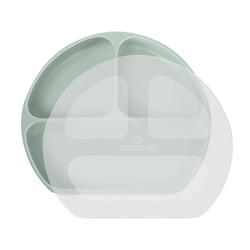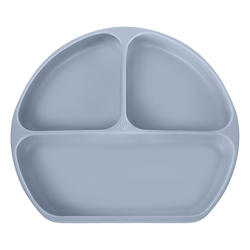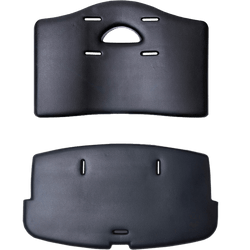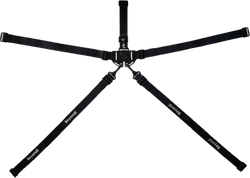The Ultimate Parenting Guide to Baby-Led Weaning

Written by Elizabeth Shields
Turning six months old is a significant milestone for your baby because it means they’re now ready for their first solids. But before you get excited and start shopping for baby foods, you might want to try baby-led weaning, which has gained praise and popularity over the years from both parents and pediatricians due to its many benefits for developing children.
Read this blog to learn more about baby-led weaning, why it’s worth a shot, and how you can excite your bub about this feeding style.
What is baby-led weaning?
Baby-led weaning (BLW) is a unique technique of introducing your child, as early as six months old, to solids, skipping the traditional mashed and pureed baby foods, and going straight to finger foods. This approach encourages babies to take control of their feeding journey, deciding what they want to pick up with their hands and putting it into their little mouths when presented with various food options.
The Benefits of BLW
Baby-led weaning has many purported benefits, including:
- Preventing children from becoming picky eaters by exposing them to a wide range of foods early on.
- Reducing the risks of developing childhood obesity because they know how to listen to their bodies, eat when they’re hungry, and stop when they’re full, unlike spoon feeding where the parents are in control.
- Promotes the development of fine motor skills, and hand and eye coordination. In baby-led weaning, your child uses their fingers and looks at colorful fruits and vegetables, stimulating vision and manual dexterity.
What to expect and baby-led weaning tips
- Baby-led weaning is super messy. Expect spills and splatters on the kitchen floors. Nevertheless, it’s a small price to pay to keep your little one happy, healthy, and well-fed. Plus, quick kitchen cleaning hacks can make your life easier.
- Preparation is key. Prevent your child from choking by serving age-appropriate foods cut up in sticks, strips, and tiny bite-sized shapes that they can hold with their little fingers. Make your offerings as colorful as possible to keep them attractive. For example, pair boiled broccoli with fresh strawberries and bananas.
- There’s a risk of choking, so be careful with what you serve. For babies younger than 12 months, do not serve nuts, whole grapes, apples, whole cherries, uncooked vegetables, big dollops of peanut butter, chunks of meat with a bone in them, hotdogs, big slices of cheese, and hard snacks like pretzels or granola.
- Know the difference between gagging and choking. Gagging is common among babies when they’re trying their first solids. It’s their way of learning how to move food around their little mouths. A child who is gagging may cough a bit, make some noise, and then resolve on their own. On the contrary, babies who are choking will be visibly terrified, wheezing, or gasping desperately for air. Their lips or skin may also appear bluish or grayish.
- Never leave your child eating unsupervised. Even if you’re letting your baby lead the way in their feeding journey, you still have to be there to guide and make sure they’re safe. Only feed when your baby is sitting upright — never while lying in bed, crawling on the floor, or sitting on a moving car or stroller. It’s always best to use a high chair!
- Be vigilant about symptoms of food allergies. Whether you’re doing baby-led weaning or not, always check for allergic reactions when feeding your child new food. These can include hives, wheezing, tongue swelling, vomiting, diarrhea, and difficulty breathing and swallowing. Consult your pediatrician about the ideal times to introduce common food allergens, like egg, peanut, or seafood.
 Canada
Canada
 Japan
Japan
 Taiwan
Taiwan
 European Union
European Union






